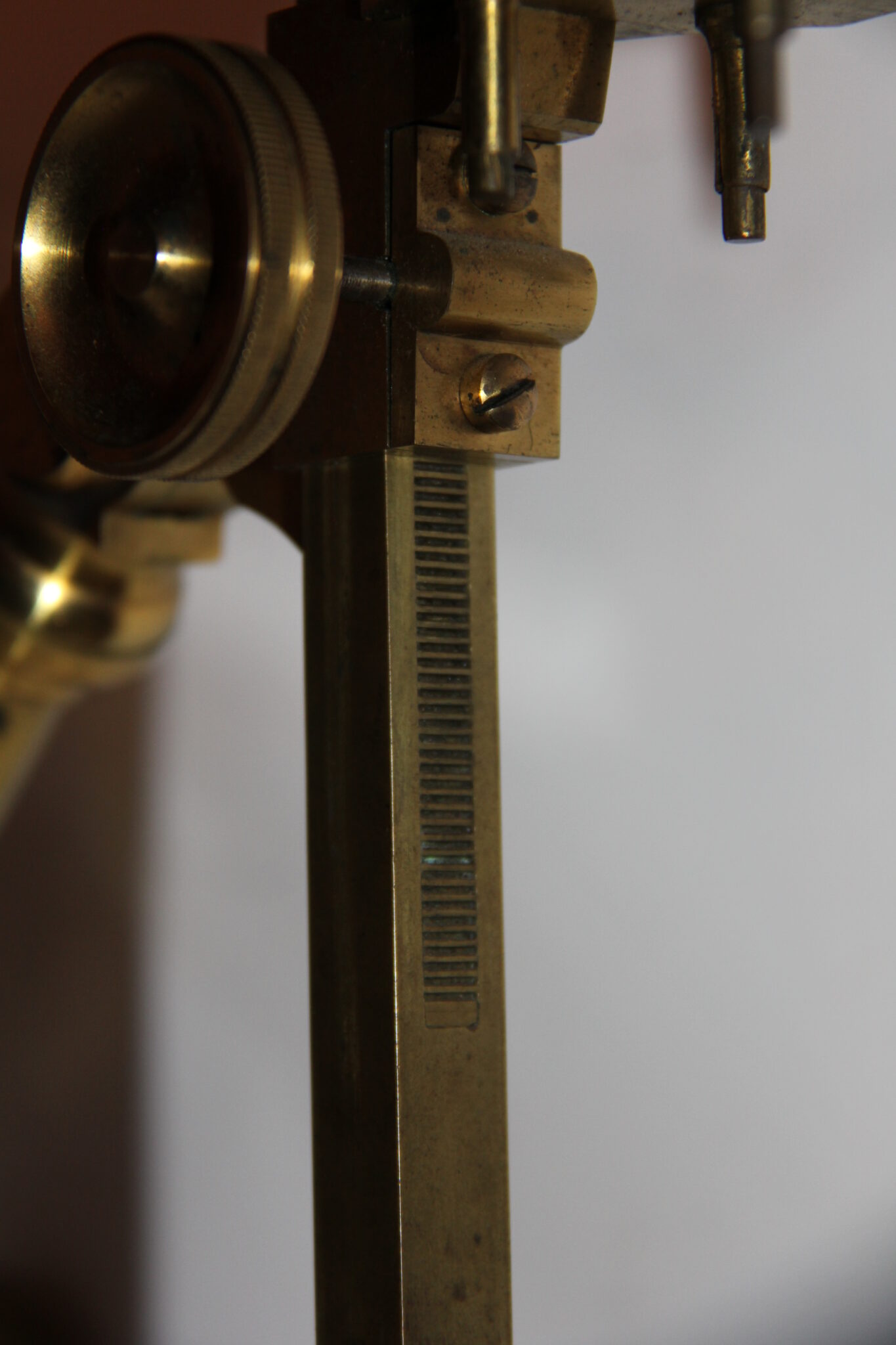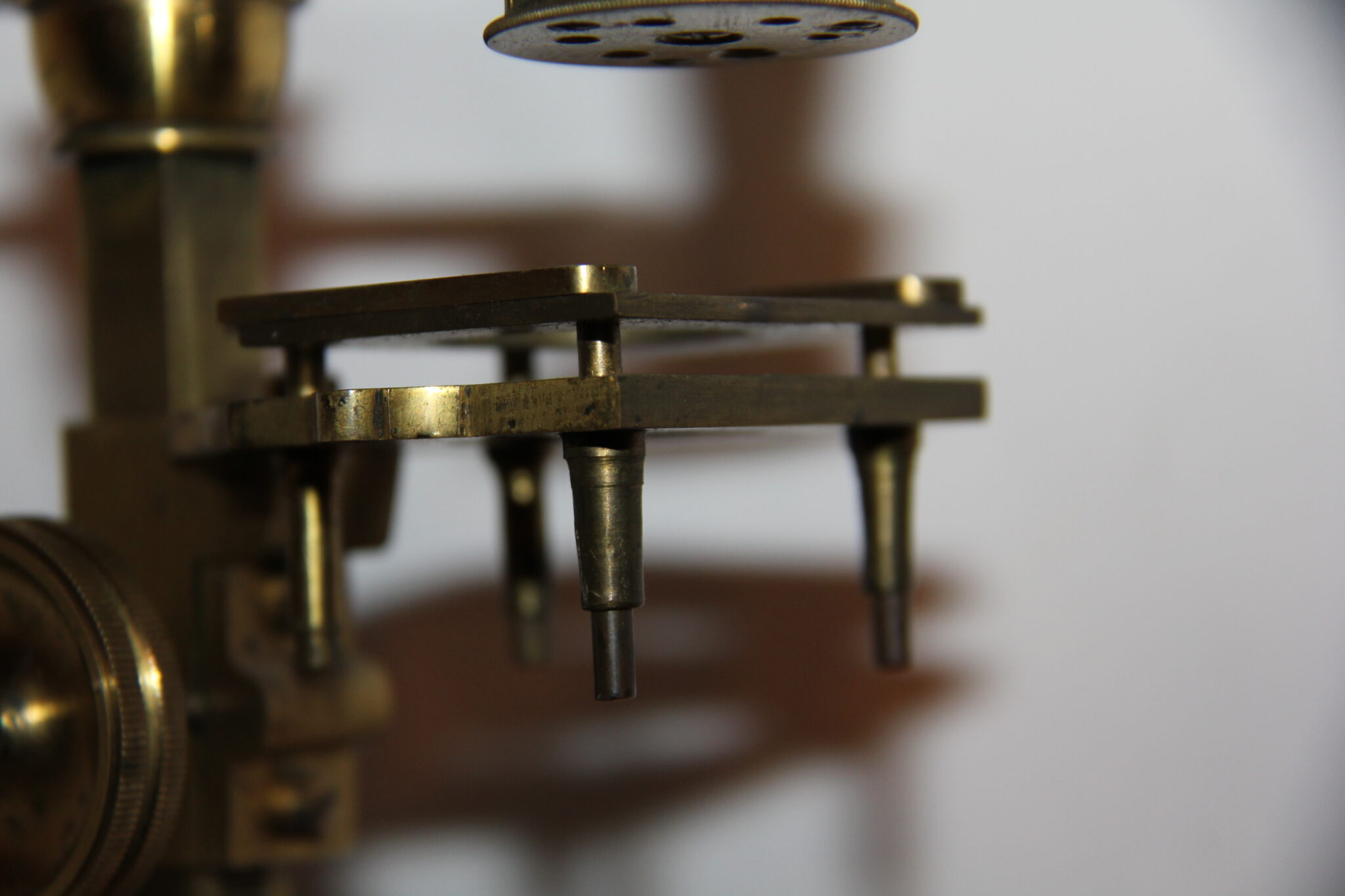Description
An extremely early, rare and fine pre-achromatic Adams/Jones-type microscope by Dollond with many unusual features c.1760.
Firstly, the ocular lens is a singlet, not an achromatic doublet that Dollond fought so hard to patent.
Secondly, the brass work of the eyepiece and body tube mimics that of Adams (pleasing tapering shape).
Thirdly, the folding feet are trapezoidal, not rectangular as seen on the Jones models c.1800. Signed “Dollond, London” in flowing script, not block style.
Lastly, the “in between” substage condensing lens of Bleuler is absent c.1780.
I believe this is one of the earliest copies of this model (popularised and mass produced by the Jones brothers) extant. As noted above, Dollond appears to have borrowed many successful and pleasing features from other makers i.e. Adams and produced a unique microscope (special order for the gentry?). Pre-Bonanni stage popularity.
The microscope can be used in simple and compound formats. In its simplest form, the sliding arm/bar can accomodate one of two Lieberkuhned lenses (lenses intact) and the forceps. A small live box, fish plate or one of three bone sliders. Stage and hand forceps can manipulate specimens and the stage mounted bullseye condenser can provide better lighting from an external source.
In compound format, the upper 6 inch body tube can be engaged with a rotating wheel of six possible magnifications (all beads intact). The stage splits and can be lowered using the four pins below to accomodate sliders, tubes, pipettes, etc. and there is a large magnifying live box tucked in the corner of the case that fits in the stage orifice (bone disc and glass disc can be used for dry/non moving specimens). The fish plate and bullseye condenser are employed here.
Cosmetically, the lacquer is 90%, the original double sided, silvered mirrors 50-70%. Mechanically, the microscope is nice and tight on the legs and inclination joint. The square, external rack and pinion is also tight and true with NO missing teeth. The roping of the brass is magnificent and the microscope stands 18 inches tall. The flame mahogany case retains all of it’s original internal wedges to ensure nothing moves, lock and hinges (no key) and measures 12 x 9 x 3 inches deep. This microscope appears to be a one off model, soon to be modified/improved over the upcoming decades as noted earlier. The optics are good.
Ask the Dealer
Dealer information
 Scientifica Opticae Inc.
Scientifica Opticae Inc.
Scientifica Opticae
Mark Hacking (Scientifica Opticae Inc.) has been an avid collector/dealer for over 40 years. A former Science teacher, he has an innate love for anything natural or mechanical. Specializing in optical (microscopes, telescopes), surveying, medical, weighing and drawing instruments, he is an active participant of the Scientific Instrument Fair in London. Living in Stratford, Ontario, Canada, with his wife and two children; Mark looks forward to meeting as many fellow collectors as possible, and has a worldwide following on eBay (Sciopti). As of Nov. 1/24 my email has changed to either [email protected] or [email protected].





















